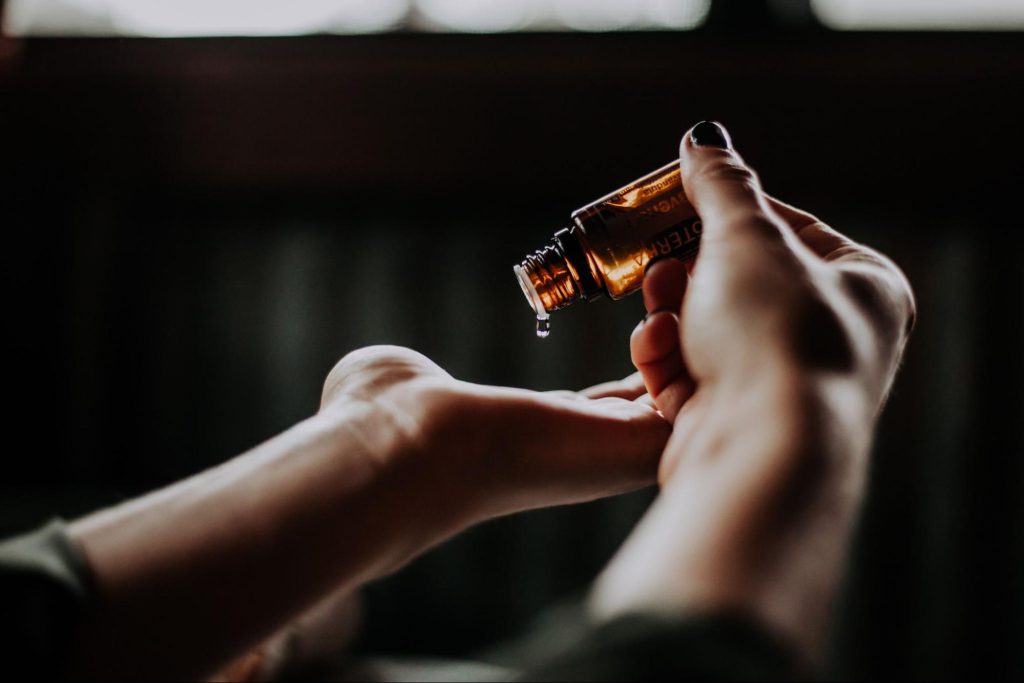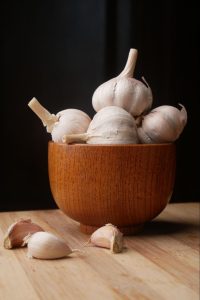How To Regain Sense Of Smell Naturally?
“Can I regain my sense of smell after losing it with COVID-19?” – Anonymous.
This post defines all you need to know about how to regain your sense of smell after COVID-19. Not just COVID-19, but there could be many reasons for losing your sense of smell.
There could be nasal polyps, tumors, allergies, side effects of some medications, traumatic head injury, etc. But, the onset of the COVID era first indicates the loss of sense of smell through itself only!
And, you feel distressed even when you don’t smell like the strongest of foods and their associated scents. Several cups of tasteless tea later, it still hadn’t clicked, not even when you dipped a piece of carrot into hummus.
However, most experts recommend only natural methods to regain your sense of smell. Before anything else, also note that the condition of loss of sense of smell can be called ‘Anosmia.’
The temporary condition of Anosmia can also be termed ‘Hyposmia’ if it’s temporary. So, our point is to make sure you’re suffering from these conditions to get help from our guide.
What are the signs and symptoms of Anosmia?
As we’ve already mentioned, both taste and anosmia are linked together. Therefore, for many individuals born with the inability to smell things or have lost the sense of smell over time, there is a chance that they would have lost the sense of taste.
Scientists believe this is because people “taste” food by smell, texture, and temperature. Thus, the ability of people to recognize the taste of foods first by the smell can also be the primary reason behind the scene.
However, every disease has symptoms, which also have the same condition. Therefore, if you have many symptoms and signs accompanying your anosmia, you should consider an ear, nose, and throat specialist evaluation.
Given below are some of the symptoms to be worried about:
- Inability to smell
- Minimized sense of taste
- Weight loss
- Headaches
- Persistent congestion and stuffy nose
- Constant nasal drainage, sneezing, and itchy, watery eyes
- Nosebleeds
So, this is how you can determine loss of sense of smell.
Effective Home Remedies For Regaining Your Sense Of Smell Naturally
The realization that the two most delicious senses had vanished from your consciousness can happen over a day. So even if you spend tons of hours tasting the most potent things, you couldn’t think of trying and seeing what you’ve detected.
As per the professional medical test, it isn’t prescribed to precisely diagnose the loss of sense of smell. A doctor also relies on the self-reporting of the symptoms mentioned above.
They may also react to a series of fragrances or food and report what you can and can’t smell. A doctor may also determine the risk of disease by assessing your past illnesses or mild symptoms of COVID-19, which you have left untreated.
Your doctor will also consider other symptoms, such as a neurological condition like Parkinson’s disease or tremors.
Fortunately, we’ve some natural home remedies that give answers for “How To Regain A Sense Of Smell After COVID-19”:
1. Smelling Strongly Tasting Essential Oils

Essential oils and their strong smells are one of the first recommendations of experts. There could be a range of essential oils that you can start with for smelling. To begin with, you can go for castor oil as suggested by Dr. Sandra El Hajj, a naturopathic physician.
Castor oil has already been used to restore the loss of sense of smell naturally due to its active component, ricinoleic acid. Ricinoleic acid may help fight infections. It also helps reduce inflammation caused by allergies and colds or reduce swelling of the nasal passages.
It would help if you used it for anosmia. First, make sure it is warm and not hot. Then, place two drops in each of your nostrils twice a day while you wake up and right when you go to sleep.
Since almost all essential oils are strongly scented, it also helps in a treatment called ‘olfactory retraining.’ Alternatively, you can also use essential oils of rose, lemon, cloves, mint, and eucalyptus.
However, during smell training, you may experience odd aromas that don’t sync with your smelling habits. This includes foul odors such as bodily waste or burning rubber. The condition is also known as parosmia. This can last for several weeks or more but is generally temporary.
2. Ginger, Apple Cider Vinegar, Or Lemon Shots
 Ginger has an intense and unique smell ideal for smell training, especially during anosmia. You can use raw or powdered ginger for this purpose.
Ginger has an intense and unique smell ideal for smell training, especially during anosmia. You can use raw or powdered ginger for this purpose.
Dr. Hajj also suggests drinking ginger tea. Drinking this tea significantly reduces inflammation of the nasal airways and stops the formation of excess mucus leading to loss of sense of smell.
You can also use ready-made ginger tea bags to make ginger tea for anosmia. Or, you can go for raw ginger to make tea. To start with, peel and slice raw ginger and steep it in hot water for around 15 minutes.
Or, you can make shots! We want to recommend you ginger, lemon, and apple cider vinegar shots by following the recipe given below.
You need around 8 ounces of fresh ginger root, one sizable juicy lemon, and 2/3rd cup of apple cider vinegar in ingredients. You also require one tablespoon of honey and 1/8th teaspoon of acceptable salt.
Now, let’s prepare our shots without any further ado!
Peel the ginger: Using a dull-edged knife or spoon, scrape and rub away the skin on the ginger. Then, chop the ginger into 10-12 pieces and grind them in a food processor while regularly scraping down the bowl until the ginger becomes a paste-like consistency.
Add a few drops of the lemon, the vinegar, honey, and salt, and process until the mixture is a thick slurry. Now, spoon the mix into a small glass and drink it in one “shot.” You can also store it in the refrigerator for up to 10 days.
3. Add Salt Water Into Your Nostril

A saltwater wash may be a perfect deal if you already suffer from sinus congestion or have allergies. This process flushes away any excess mucus or allergens from the nasal passage.
There are ready-made sterile saline solutions available on the market for this purpose. Given below is a list of steps to do this activity:
- Pour 1 cup of boiled tap water into a freshly washed container.
- Now, add ½ teaspoon baking soda with the same amount of salt within the water.
- Take a medical syringe and fill it with the mixture prepared above.
- Then, squirt this mixture into each nostril by tilting your head backward while aiming the solution at the back and not at the top of the head.
- Let it drain out from the other nostril of your mouth. Repeat this activity at least two times a day for better results.
4. Start Smelling Your Most Memorable Scents

By recalling memory with your favorite perfumes, you can slowly yet ultimately regain your loss of sense of smell. Start by whiffing them for about 25 seconds. Then, remember a connected memory in your brain while smelling them!
Imagine what the smell looks like and feels like! This is referred to as ‘olfactory training,’ where you connect smelling the things with particular events. Don’t be in a hurry, and give your brain at least one minute to process the smell.
You can do this activity for proper olfactory training by lining up four essential oils of your best memory. And continue the process of smelling each of the four scents as mentioned above.
Do this activity at least twice a day for three months. Time is essential for this activity as olfactory nerves take time to heal and recover. You may feel like you’re running a marathon and perseveration is necessary.
5. Test Quick And Yummy Peanut Butter Cookie

This recipe is pretty healthy and needs the ingredients, namely 1 cup quick oats, one teaspoon baking soda, vanilla extract, one teaspoon, 3/4th cup butter, 1/4th cup honey, and one egg.
Preheat the oven to 350 degrees. Take a blender or food processor, put in the oats, and grind them to make oat flour. Then, take a large container, and combine the peanut butter, oat flour, baking soda, vanilla, egg, salt, and honey. Finally, you can use a hand mixer (or heavy wooden spoon) to combine and make it with a thick consistency.
Scoop about 1 1/2 tablespoons of dough balls in volume and place them over a silicone- or parchment paper-lined baking sheet. Now, use your palm and press these dough balls. Then, it would help if you created a crisscross pattern on the top of each cookie by pressing with a fork. Next, take fork sticks to the dough, and wipe the fork on a paper towel sprayed with non-stick cooking spray.
Lastly, store these cookies in an airtight container on the counter for up to 3 days. Next, keep all of them in the refrigerator as well. Wrap them in bundles of 3-4 cookies in plastic wrap, then place them inside a zippered plastic bag and keep them in the refrigerator
6. Use Peppermint Leaves

Peppermint, being a main constituent of menthol, could be another great and natural way to regain the loss of sense of smell. Take around 10-11 leaves of peppermint and boil them within a cup of water.
Once it cools down, strain this solution and add some honey for taste. It is antimicrobial and anti-inflammatory which can effectively alter your sense of smell and taste.
7. Drink Lots Of Water

Water is a natural healer. Don’t skip on your water consumption in any manner or any condition. Drinking loads of water assists in clearing unwanted coughs. Water helps keep your body hydrated as well.
With water, you can also take hot steam to treat a nasal blockage or nasal congestion. That will effectively cure your nose with an open gate to breathe.
8. Consume More and More Garlic!!!!

The compounds of garlic are also anti-inflammatory and antimicrobial. It not only heals the anosmia but also treats the flu-like symptoms, cold, stuffy nose, etc. This may help you breathe easier and restore your sense of smell and taste.
To prepare a remedy, you need to take 2-3 chopped garlic cloves. Boil around one cup of water and add these cloves to simmer for a few minutes. Then, strain and drink the tea! This mixture can be taken at least twice a day for better results.
9. Take Cayenne Pepper Into Your Daily Food Intake

Cayenne pepper consists of capsaicin which is known to clear nasal congestion. It also helps restore your lost sense of taste and smell.
To prepare cayenne pepper natural remedy, take around 1 teaspoon of cayenne pepper, 1 cup boiled or warm water, and 1 teaspoon of honey. Mix a teaspoon of cayenne pepper powder and honey in a glass of water and then drink the concoction.
Note: Cayenne pepper can lead to stomach aches if consumed in heavy quantities. In case you are already suffering from high blood pressure and taking medications, you might need to consult your physician before inputting this natural mixture.
10. Go For Oil Pulling

Oil pulling is better known to improve oral health for ages. It may also help handle sore throat symptoms and refresh the taste in your mouth. To do oil pulling, you need to take around 1 tablespoon of coconut oil or sesame oil.
11. Don’t Forget To Take Vitamins In Your Food Intake

Please note that diet plays a very important role in any condition! Also, keep in mind that Vitamin D is associated with loss of taste and smell. Consume foods rich in these vitamins like cereals, shellfish, cheese, and milk to treat these deficiencies.
Or, you can go for additional supplements after consulting your doctor. Also, remember to change your eating habits while you’re following the remedies mentioned above.
How to diagnose if I’ve lost my sense of smell?
The diagnosis of the loss of sense of taste and smell is often done by an otolaryngologist or an ENT specialist. Your doctor may test for the lowest taste concentration that you can odor and sense that you can smell. For this purpose, you may have to taste varieties of foods to taste.
You may also take a simple ‘spit, sip, and rinse’ test. Your doctor might do a physical check-up of your nose, ears, or throat.
Once the diagnosis is accurately done, the doctor will suggest the appropriate mode of treatment.
Medical Solutions For Regaining Sense Of Smell After COVID-19
This treatment is based upon the severity of symptoms, age, and general health. The treatment options may include:
- If you have zinc deficiency, then it may also hamper your sense of taste or smell. Thus, taking zinc can help stimulate food intake by triggering the hypothalamus to enhance the sense of taste.
- Sometimes medications also cause these conditions as already stated, you will be asked to discontinue or stop taking them.
- Quitting smoking can assist in regaining a sense of smell or taste.
However, if you’re wondering about natural alternatives to your condition, the home remedies listed above might help.
Final Words
So, these were some of the top-recommended DIY remedies on how to regain a sense of smell after COVID-19 with continuous practice. We’ve also touched on points of early signs and symptoms along with professional medical treatments for the condition. Hopefully, you found our information helpful. Let us know in the comments section below for any of your queries!
Related FAQs
1 – How long can it take to regain your sense of smell and taste with COVID-19?
Since your support cells are affected by the virus here, thus it may generally take four to six weeks provided you’re effectively following the remedies to regain your loss of sense of smell after COVID-19.
2 – What is smell training for loss of smell due to COVID-19?
Smell training is nothing but a simple memory technique associated with smelling things. It is also known as ‘olfactory training’ and is usually done with the strongest and most pungent essential oils.
We’ve already described the process of olfactory training in brief above. So, make sure to give it a read beforehand!
3 – What can I eat if I have no taste of COVID-19?
Some patients with issues related to smell and taste find that chilled or frozen foods taste better to them than warm or hot foods. If that’s true for you, too, try yogurts, smoothies, shakes, egg salad, or frozen fruit.
4 – What are the best foods to eat during the COVID-19 pandemic?
Eat fruits, vegetables, legumes (lentils, beans, etc.), nuts and whole grains (such as oats, wheat, brown rice, potatoes, and yams), and foods from animal sources (such as meat, fish, eggs, and milk).
5 – Can COVID-19 symptoms come and go?
Yes. During the recovery process, people with COVID-19 might experience recurring symptoms alternating with periods of feeling better.


